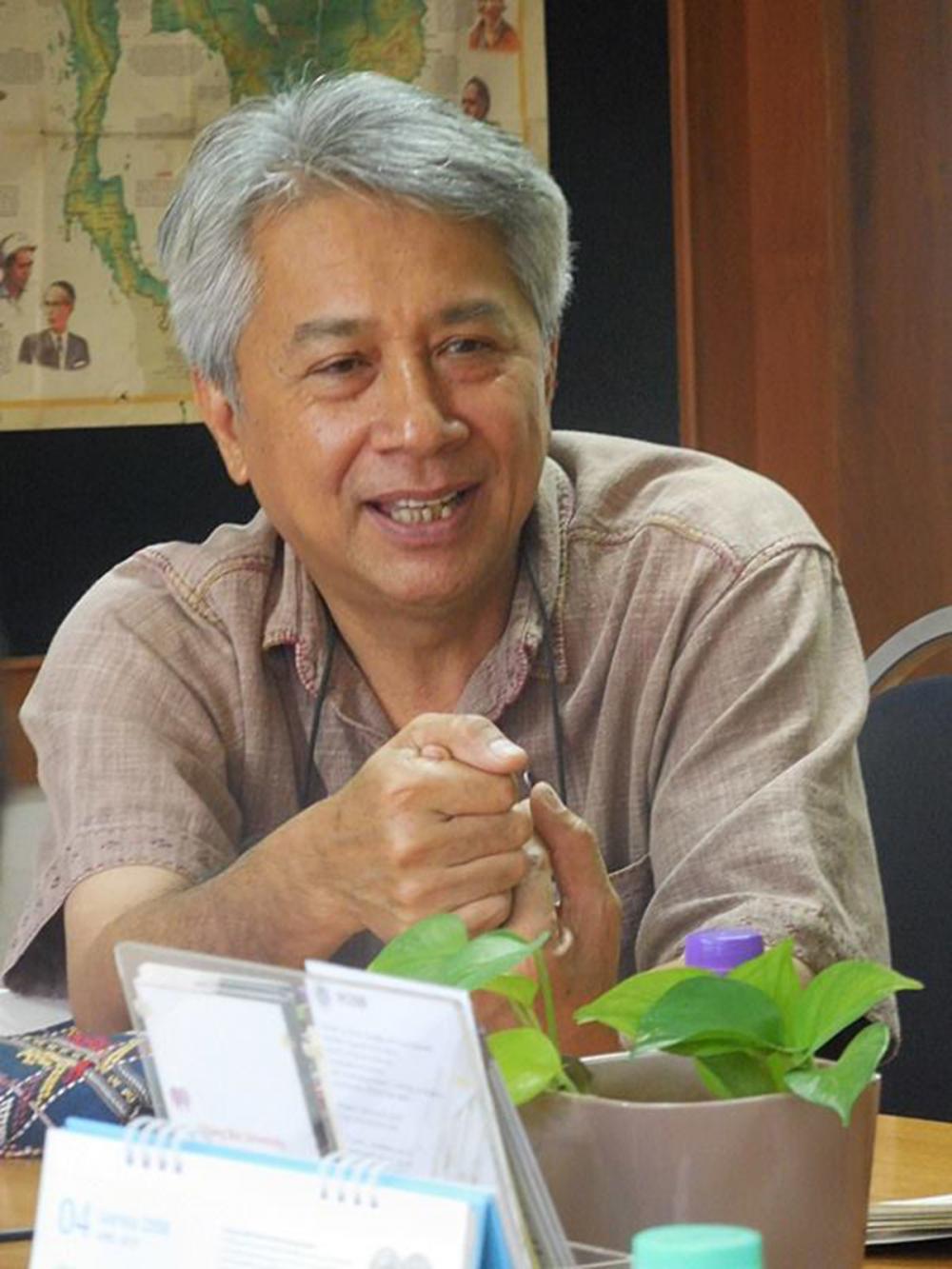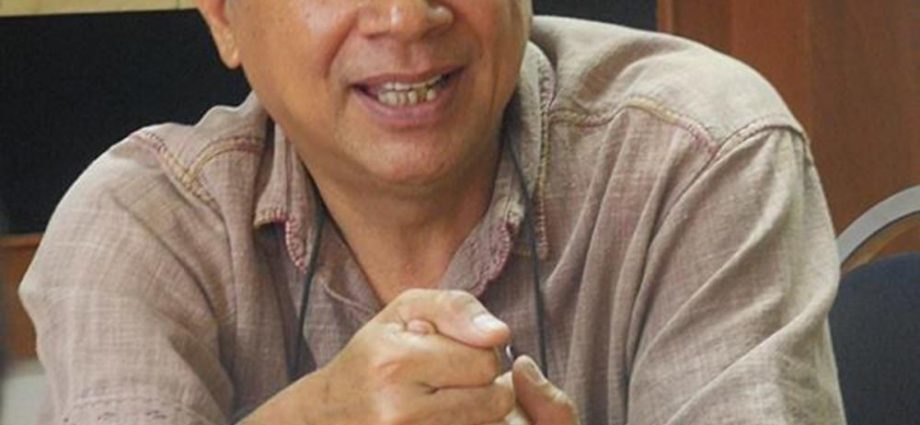
Severe haze pollution has not only posed a health hazard to residents in Chiang Mai, but also dealt a blow to its tourism.
Concerned parties have urged the government to come up with long-term measures to deal with the problem, including pushing for the passage of a “clean air” bill pending deliberation in parliament.
The PM2.5 pollution choking the upper northern provinces, including Chiang Mai, has stoked hopes among residents that the government which takes shape after the May 14 general election will tackle the problem mainly caused by slash-and-burn agriculture and man-made forest fires.
According to a Geo-Informatics and Space Technology Development Agency (Gistda) report, Suomi NPP satellite images showed that from January until this month, Myanmar had the most hotspots among Thailand’s neighbours with 275,000 hotspots, followed by Laos with 220,000, Thailand with 154,000, and Cambodia with 100,700.
In the upper North, Chiang Mai recorded the highest number with 12,000 during the four-month period with more than 150,000 rai of land destroyed by fires.
About 6,900 forest fires were spotted in forest reserves, while 4,500 were spotted in national forest park areas, causing PM2.5 levels to exceed standard safety levels for more than 70 days, with an air quality index (AQI) level worsening for long periods in Chiang Mai.
From March until recently, PM2.5 levels and the worsening AQI in the northern province ranked top among the world’s worst air pollution. On some days, PM2.5 levels exceeded 800-900 microgrammes per cubic metre (µg/m³), exceeding the standard level of 50 µg/m³ set by the World Health Organisation.
This prompted authorities to advise residents to work from home to avoid the impact of the worsening air pollution and step up help for areas affected by the haze crisis.
Health risks
Thanks to the air pollution, Rangsarit Kanchanawanich, a cardiologist at Chiang Mai University’s faculty of medicine, said Chiang Mai residents face an increasing risk of epidermal growth factor receptor mutation which causes lung cancer, not to mention the risk of heart diseases and strokes, and their lifespan could shorten by 4-5 years.
“We want the government to show the political will to save millions of lives,” Dr Rangsarit said.
Even though the government declared tackling the haze pollution as a national priority on Feb 12, with a set of measures rolled out to deal with the problem including a ban on burning, the haze crisis has yet to ease, he said.
Chalerm Liwsrisakun, head of the department of internal medicine at Chiang Mai University’s faculty of medicine, said PM2.5 pollution is harmful to the heart and brain, with numerous patients suffering from the obstructive pulmonary disease each year.
According to the Chiang Mai public health office, between 30,000-40,000 patients suffer from diseases caused by air pollution from January to April each year and the number is increasing because the problem continues to worsen for long periods.
Patients suffering from skin disease make up the biggest number with more than 10,000, followed by 8,000 suffering from the chronic obstructive pulmonary disease, 5,700 suffering from eye inflammation, 3,800 from strokes, 3,500 from sore throats.
A gap in understanding
Chatchawal Thongdeelert, president of the Chiang Mai Breath Council, said despite collaboration among agencies to solve the haze problem, a gap in attitudes remains between local communities whose livelihoods rely mainly on forests, and the government which is orientated towards law enforcement to deal with the problem, such as imposing a ban on burning.
“Some communities on mountains have to clear land by slashing and burning as part of swidden agriculture.

Chatchawal: Smog curbs holiday surge
“But when this is made illegal under the law, they have to do it secretly to avoid arrest,” Mr Chatchawal said, adding people burn forest land because they expect to gather edible wild products which are expected to regrow better after fire and rain.
In some cases, burning is intended to get rid of an accumulation of dry leaves, grass and vegetation which serve as fuels for forest fires, he said.
Mr Chatchawal said an agro-industry company has encouraged farmers to grow maize for livestock feeding for export, with increasing amounts of farmland converted to maize-growing and forests encroached for the purpose.
Of the 7-8 million rai for growing maize nationwide, 4.5 million rai is in the North, he said, adding that after the harvest season, famers cut and burn crop residues to clear land for a new round of farming.
“Despite the ban on burning, farmers have no other method at their disposal so carry on,” he said, adding that man-made fires caused by burning on their farmland also spread to adjacent forest land.
“The problem is compounded by transboundary haze from neighbouring countries where the slash-and-burn practice also occurs as a result of the same company encouraging farmers in those countries to grow maize as animal feed.
“The government sees the haze pollution as a one-off and seasonal problem so will never succeed in solving it.
“It must make a serious effort to tackle it all year round by giving local volunteers a greater role with the support of state mechanisms.
“Policies and action plans must be devised and budget funds allocated to address the problem, with the aid of an efficient communication system while collaboration with neighbouring countries must be stepped up.
“A clean air bill pushed by the civic sector has been tabled before parliament. We hope the new government will proceed with it,” he said.
Tourism hit by haze
La-iad Bungsrithong, adviser to the Thai Hotels Association’s Upper Northern Chapter, said the severe haze pollution in the North, particularly in Chiang Mai, is also affecting the local economy, especially the hotel business.
Activities and promotional campaigns were rolled out to attract tourists to Chiang Mai during Songkran, but the haze pollution discouraged many, she said.

La-iad: Touristsavoiding North
It was initially estimated that 65% of more than 50,000 hotel rooms in Chiang Mai would be booked, but only 40% were actually reserved, she said.
She added that room reservations were cancelled mostly by Thai tourists due to the PM2.5 problem as they opted to travel to seaside destinations. Some visitors to Chiang Mai stayed for only a few days, she said.
“April is the low-season period for tourism in Chiang Mai and other provinces in the North. Songkran is the only main event which can attract tourists. But the PM2.5 problem is a hindrance, causing Chiang Mai to lose income,” Ms La-iad said.
“Several hotels and other types of accommodation in Chiang Mai have installed air purifiers to protect customers from the impact of PM2.5, which adds to their operating costs,” she said.
“PM2.5 pollution is a big problem at national level, requiring cooperation from all agencies involved. People are also calling for the quick passage of the clean air bill to solve the problem,” she said.

An aerial photo shows a fire on the slopes of Doi Suthep in Chiang Mai on March 31. FACEBOOK: First Care Safety & Medical Thailand
Phunat Thanalaopanich, president of the Thai Hotels Association’s Upper Northern Chapter, said state agencies and business operators had worked together to organise activities and promotions to attract tourists, particularly Chiang Mai, during Songkran this year.
Previously, Songkran festivities were suspended nationwide due to Covid-19.
“Every one expected more tourist arrivals this year as a vast array of activities were organised after Covid. But the number of tourists dropped by 30% because of the air pollution,” he said. The haze pollution is so severe that it has now affected tourism-business and hotel operators, he said.
Suladda Sarutilavan, director of the Tourism Authority of Thailand’s Chiang Mai office, said state agencies and the private sector co-organised activities to stimulate local tourism before the low season in Chiang Mai.
However, between April 13-16 this year, only 41,254 tourists arrived at Chiang Mai airport. Of them, 30,918 were domestic travellers, and the rest were international arrivals, she said.
Chinese travellers made up the largest number at 2,838, followed by 2,578 Thais, 1,084 from South Korean, 632 from Taiwan, and 518 from the US.

